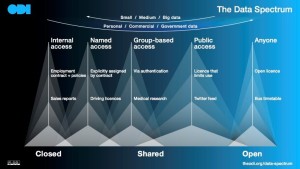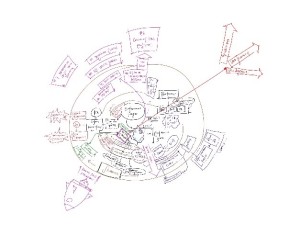 This year myself and Antonio Pisano (of Marcel Mauer) will be continuing the data theme started during our time as co-chairs of G4C and look to drive a better understanding and a better outcome for the construction industry with respect to its use of data.
This year myself and Antonio Pisano (of Marcel Mauer) will be continuing the data theme started during our time as co-chairs of G4C and look to drive a better understanding and a better outcome for the construction industry with respect to its use of data.
The vision is to make Constructing Excellence the reference organisation for cross industry data driven collaboration, whilst data may be hosted by a number of different entities, the systemic awareness required to champion innovation in collaboration will be generated by CE in collaboration with its members.
This journey recently started with our first roundtable as we looked to explore what the issue with data is in construction and ask the question what can constructing excellence do about it.
We know that our industry creates vast amounts of it but, do we use it well and do we use it wisely?
An enjoyable and intriguing discussion bounced from a number of issues to a number of potential solutions. Examples of excellent practice both within and external to the industry gave reference to how it could and possibly should be done. We even managed to bring it all back to the importance of good procurement!
A number of key messages however did come to the fore:
- The quality of the data generated is currently (generally) poor
- The need for demand side interest to move the conversation forward is paramount.
- There is potential for data to create an integrated industry experience
- There is a need for better and simpler best practice sharing
- A behavioural change is needed to embrace a data culture
- There is potential and a requirement to create a data ecosystem
- There is potential to use data to benchmark holistically what we define and measure as value.
The data spectrum
 Those who have followed G4C over the last 18 months have seen a strong message towards the benefits of open data and a shared economy.
Those who have followed G4C over the last 18 months have seen a strong message towards the benefits of open data and a shared economy.
But as with most things in construction there isn’t a simple answer and there are many layers that need to be considered.
Data can and should be considered across the whole data spectrum and then used and shared appropriately. What we can and should do is help enable the data to be accessed and understood regardless of where it sits on the spectrum.
We were joined at the roundtable by the Open Data Institute (ODI) who discussed a recent collaboration with the banking sector. There they supported the creation of an open standard API that allowed for better communication and the sharing of data between organisations. Essentially it helped the industry ask questions and receive answers quicker and in the same language. More on the open banking standard can be found here
Could this work for construction?
We considered the benefits of an open standard format against an open API for the industry.
Around the table it was felt that with BIM and a number of standards (such as PAS:1192) we have a number of common data sets, themes and languages that are used, but it’s the way we use them and the quality of the input that is the greater issue. In essence we have the foundations of a standard format we just need to use it better.
The API would therefore be an attractive alternative but difficult to implement.
So how would you implement?
 We’ve seen the merits of mandating through BIM level 2 and arguments were made for and against this route for a wider ‘data’ mandate. There was no immediate mandate for the banking sector but upcoming changes to regulation and a simpler understanding of the benefits that could be realised resulted in the ground swell required to make a difference.
We’ve seen the merits of mandating through BIM level 2 and arguments were made for and against this route for a wider ‘data’ mandate. There was no immediate mandate for the banking sector but upcoming changes to regulation and a simpler understanding of the benefits that could be realised resulted in the ground swell required to make a difference.
The importance of the demand side interest to drive this forward was clear from our discussion what was less so was how! The disjointed nature of our industry is often what makes this difficult and as such one consideration given during the discussion was to find a golden thread from investment through to customer (both in terms of owners and users). Much was suggested but a sustainability and carbon theme had the strongest potential as this golden thread and a potential starting point for data gathering and data sharing throughout the asset lifecycle.
It is difficult to succinctly write a blog capturing all the good that came from the roundtable, but this is the beginning of the journey and we look forward to hosting further roundtable discussions that will ultimately look to shape an action plan for the CE membership and for the industry to champion and move the use of data forward within construction.
If you are interested in being involved in future discussion please contact us at [email protected] or [email protected]
Finally thanks must go to the attendees of the roundtable who provided the content of a fascinating discussion:
Neil Thompson –Balfour Beatty
Paul Wilkinson – Pwcom
Colm Quinn – CE
Paul Oakley – BRE
Alex Strachan – T&T
Etienne Leroux – T&T
Dr Jozef Dobos – 3D Repo


Comments are closed.